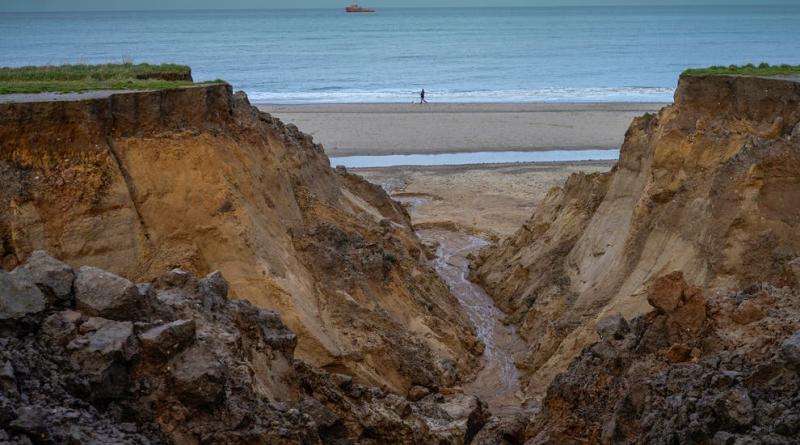Coastal communities to get funding to adapt to threat of erosion

East Riding of Yorkshire and North Norfolk to be initial recipients of new funding.
Coastal communities are set to receive a £36m cash injection to boost local trials of innovative ways to adapt to the effects of coastal erosion.
The funding forms part of its £200m Coastal Transition Accelerator Programme and will focus initially on East Riding of Yorkshire and North Norfolk.
The two local authorities will be allocated money to help communities on parts of the coastline that cannot be sustainably defended from coastal erosion.
As well as putting in place forward-looking preparation and plans, both areas are being urged to trial several more immediate remedies to bolster the long-term resilience of coastal communities.
Floods minister Rebecca Pow said: “As climate change brings more extreme weather, we must redouble our efforts to build a more resilient nation.
“We have ramped up flood and coastal erosion policies, and we will always defend our coastline where it is sustainable and sensible to do so. Where it isn’t we will support communities to adapt.
“What we are announcing today will support innovative solutions to help those areas most vulnerable to coastal erosion to prepare and adapt.”
The local programmes will be developed and delivered by the Environment Agency, which will also ensure that ongoing learning is shared with other vulnerable areas facing similar challenges.
Interventions are likely to include improving and replacing damaged community infrastructure, such as beach access or coastal transport links, and replacing public or community owned buildings in areas at risk with removable, modular, or other innovative buildings.
The government have also suggested that repurposing land in coastal erosion zones for different uses -such as temporary car parks - will be explored, alongside restoring and creating habitats to include green buffer zones.
Programme leaders are also likely draw on the finance and property sectors to explore innovative finance or funding mechanisms to help move communities from the highest risk areas. An example might be a scheme to incentivise the relocation of at-risk infrastructure for businesses and homeowners.
Developing the local planning system so it supports and facilitates the managed transition of communities from high-risk land is also a priority. The programme will also aim to ensure it restricts future development in areas affected by coastal erosion.
Emma Howard Boyd, chair of the Environment Agency, said that the programme hopes to prepare local authorities to aid the transition of communities away from the current coastline.
“England’s coastline has never been static. Today, 9,000 kilometres of open English coast is at risk from sea flooding, erosion and landslips, and by 2100 once-a-century sea level events are set to become annual events,” she said.
“As a minimum, we need to plan for at least a metre rise of sea level rise by the end of the century. In some places the pace and scale of change may be so significant that, over a period of time, coastal authorities will need to help local communities transition away from the current shoreline over time.
“This programme is about providing that local support while increasing the whole country’s expertise and resilience in the face of climate and coastal change.”
The government said that these two initial locations were selected as they are already living with these challenges - between them housing 84 per cent of the properties at risk of coastal erosion in England over the next 20 years.
Councillor Jonathan Owen, leader of East Riding of Yorkshire council, said: “Valuing our environment, tackling climate change, safeguarding our heritage and countryside whilst developing our infrastructure remain key priority areas for the council and on that basis, we very much welcome today’s announcement.
“Our coastal communities are vitally important to the East Riding and residents will be supported to prepare and plan for the long term impact of climate change, while also trialling some immediate actions that support the long-term resilience of communities near the coast.”
His counterpart at North Norfolk District Council, Councillor Tim Adams, similarly welcomed Sunday’s announcement, saying: “This new initiative is going to build on our previous experiences and actions in meeting the constant challenge of coastal erosion in North Norfolk, to help us to continue to work together with our local communities and shape a positive future alongside those most at erosion risk.
“We will be exploring practical actions which can be done now and in years to come, aided by this support from the CTAP programme.”
Author: Emily Atkinson





